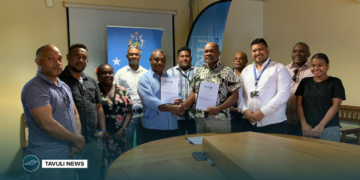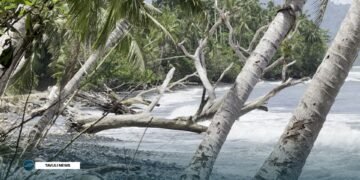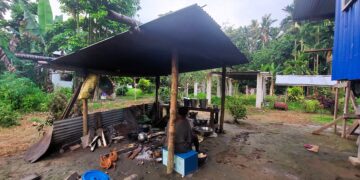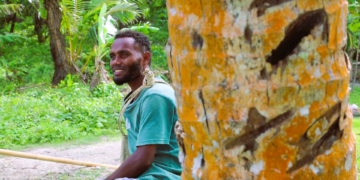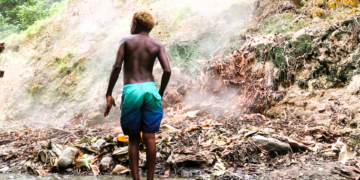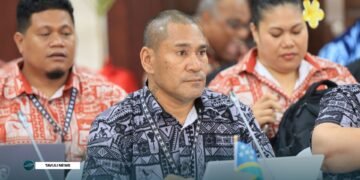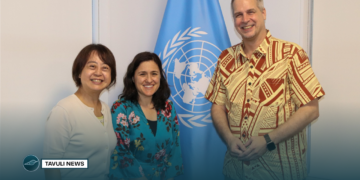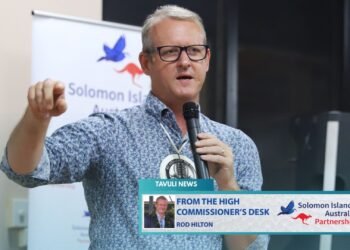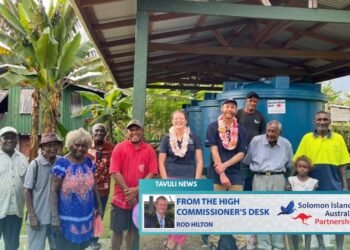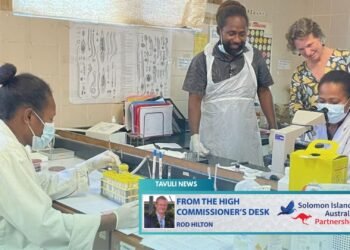Australia and Solomon Islands: From Development to Investment Partners at Kolombangara
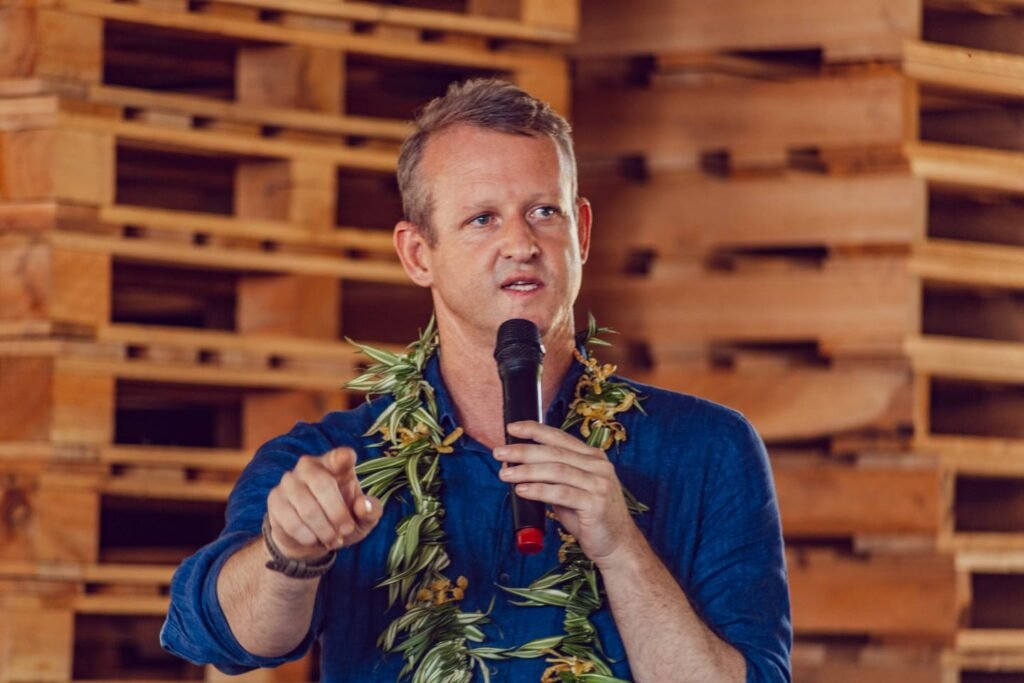
visit to Kolombangara in 2023, standing in front of a pile of pallets made by KFPL.
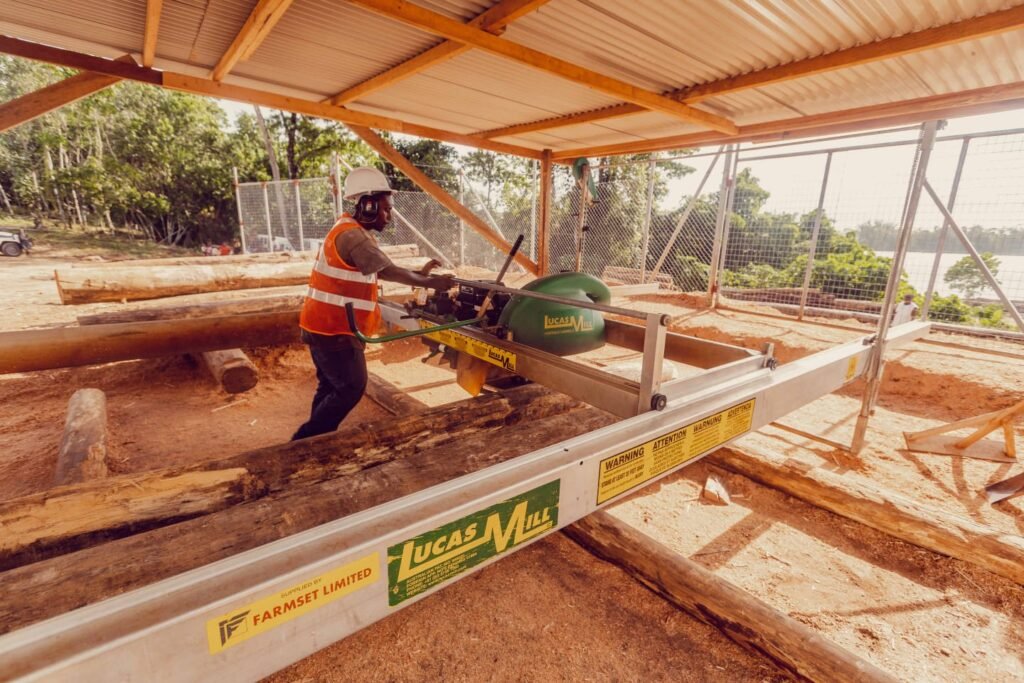
As Australia’s High Commissioner, I have been lucky to travel all around Solomon Islands. My first provincial trip as High Commissioner was to Western Province, where I travelled to Kolombangara. I met with the local community and saw their connection with the land, the beauty of the mountain and its surrounds. I also visited Kolombangara Forest Products Ltd (KFPL)’s timber processing facility, where I launched a new pallet production facility – the only one of its kind in Solomon Islands.
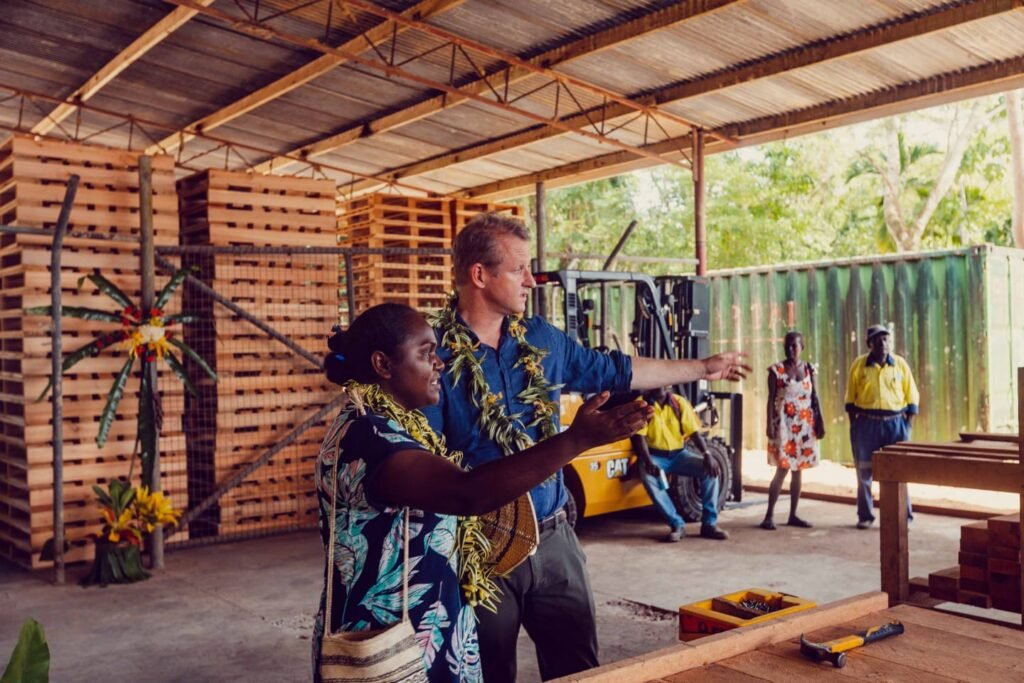
Australia partnered with KFPL to establish this pallet making facility through our flagship private sector development program, Strongim Bisnis. Pallets are now sold to local businesses and exported to Australia, boosting local jobs and skills development.

Australia is proud to be Solomon Islands’ numbawan development partner. But my most recent interaction with Kolombangara was not to launch a development project but to welcome a commercial investment in KFPL by Australian based investor New Forest.
New Forests is an experienced asset manager with over SBD60 billion of nature-based assets, most of which are in Australia. New Forests is a certified B Corporation, which means it’s a company that voluntarily holds itself to high standards for social sustainability and environmental performance. Its business model is designed to put climate change action, biodiversity enhancement, and community development at the forefront of its investments. This landmark deal marks its first investment in the Pacific.
KFPL was a compelling partner for New Forests. KFPL has consistently been a leader in sustainable forestry in Solomon Islands, and is the only business recognised by the global standard Forest Stewardship Council (FSC) certification, which it has held since 1998. The sustainability practices recognised by the FSC certification are core to maintaining export access to markets that will pay a premium, like Australia.
Importantly, the involvement of an Australian investor at Kolombangara doesn’t mean that the local community will lose their voice. On the contrary, they will be more directly involved in the business than ever before, thanks to the transfer of a 20 per cent share of KFPL to local landowners. This creates a direct pathway for local community engagement and ensures the people of Kolombangara experience the economic benefits of New Forest’s investment.
When I joined Prime Minister Manele and others at a recent signing ceremony in Honiara marking New Forests’ investment, it was clear the deal represented a significant milestone for many. New Forests’ investment in KFPL means Solomon Islands will continue to have a vibrant sustainable timber industry for generations to come. This is particularly important given the challenges faced by the rest of the forestry sector
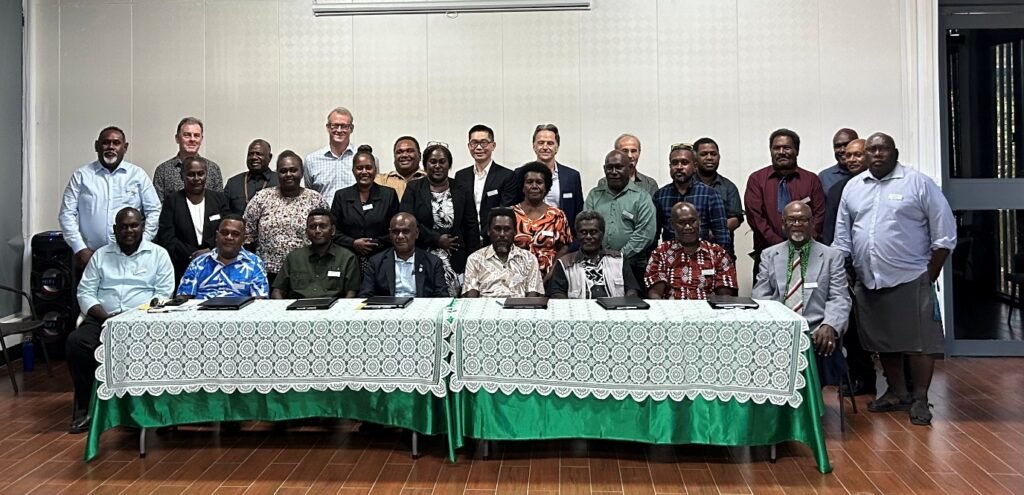
Australia has also supported the growth of Solomon Islands’ sustainable timber industry more broadly. Since 2013, the Australia and New Zealand-funded Pacific Horticultural & Agricultural Market Access (PHAMA Plus) program has strengthened the local sawn timber industry by helping businesses expand their export market access, in partnership with the Solomon Islands Timber Processors and Exporters Association. This year, we helped businesses seek the Forest Stewardship Council (FSC)’s chain-of custody certification, enabling more value-added processing of timber to happen in Solomon Islands with the confidence of export market access.
As I approach the end of my time in Solomon Islands, I am so pleased Australia has played its part in shoring up the future of KFPL. It is a great example of government, landowners, development partners and investors working together in partnership. I hope this can be a model for other investments in Solomon Islands and the rest of the Pacific that support local jobs and protect the environment.
Lukim iu neks taem!

















